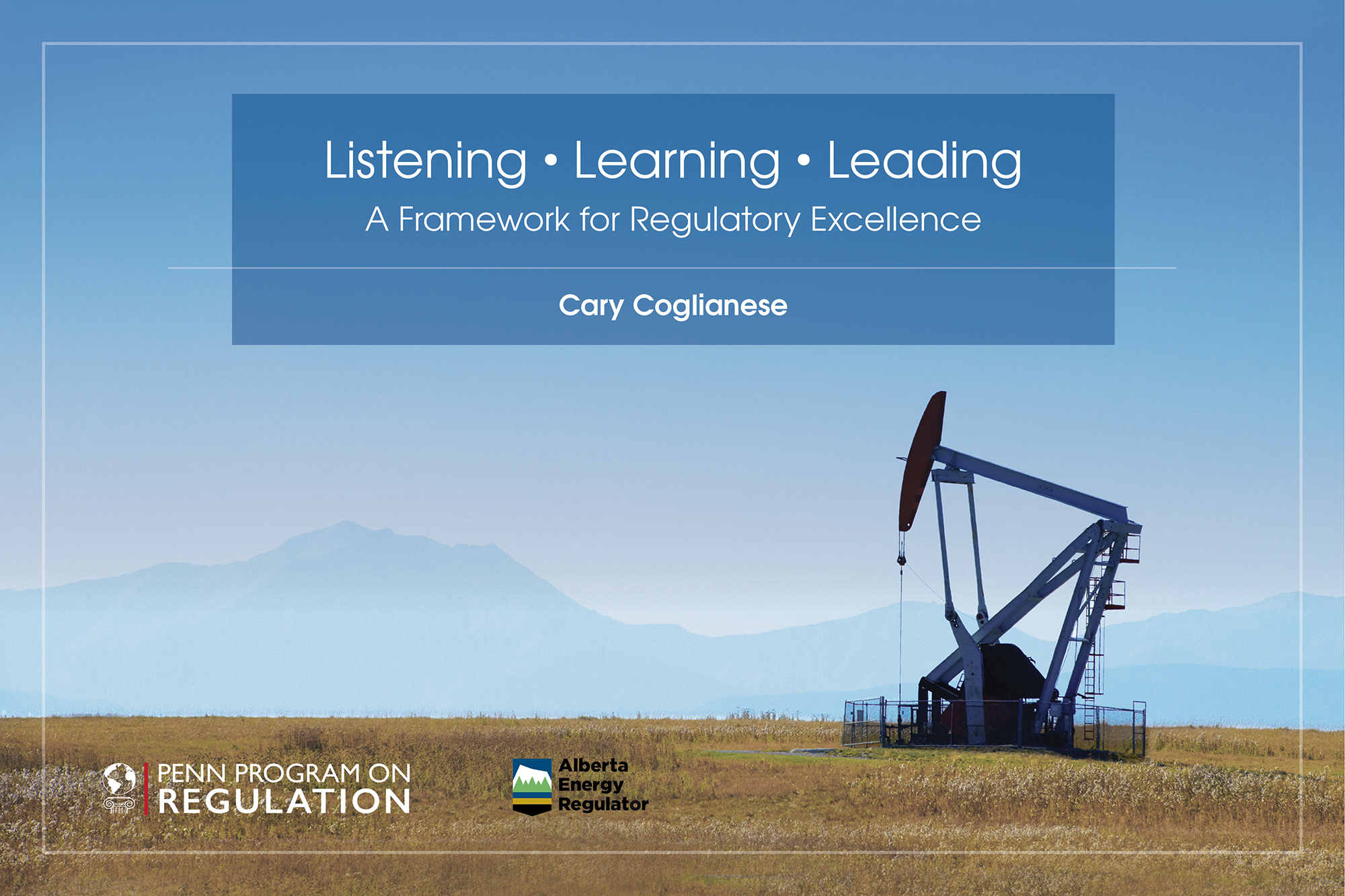
The Regulatory Review highlights the release of the PPR Best-in-Class Regulator Initiative’s final report.
What does it mean to be an “excellent” regulator? What qualities does regulatory excellence require? How is such excellence measured? And how can a regulator achieve the goal of regulatory excellence?
A new report, issued today by Penn Law professor Cary Coglianese for the Penn Program on Regulation’s Best-in-Class Regulator Initiative, answers these questions. The report culminates the Initiative’s efforts to define “regulatory excellence.” The project, commissioned by the Alberta Energy Regulator and led by Coglianese, incorporated papers from a wide range of scholars and multiple dialogues held both in Alberta and Philadelphia.
In this series, The Regulatory Review highlights the release of the final report with the announcement of the final report and essays by Professor Coglianese discussing some of the findings in the report.
Penn Program on Regulation Issues Final Report of Best–in-Class Regulator Initiative
October 21, 2015 | Ryan Teitman
University of Pennsylvania Law School professor Cary Coglianese issued today his final report of the Penn Program on Regulation’s Best-in-Class Regulator Initiative, an effort commissioned a year ago by the Alberta Energy Regulator (AER) to define regulatory excellence and offer recommendations to regulators around the world about how they can improve and measure their regulatory performance.
The Regulatory Excellence Molecule
October 22, 2015 | Cary Coglianese
What we need to do is break down regulatory excellence into its core attributes, just as chemists break down physical matter into its component parts. When we treat regulatory excellence as a molecule – let us call it “RegX,” for Regulatory Excellence – it became clear to me that it is made up of three essential “atoms”: Utmost Integrity; Empathic Engagement; and Stellar Competence. These three atoms encompass the myriad attributes that we documented in all our research, interviews, and dialogue sessions over the last year.
Regulatory Excellence as “People Excellence”
October 23, 2015 | Cary Coglianese
As vital as it is for a regulator to possess adequate technical skills and knowledge, such expertise is only a necessary component of regulatory excellence, not a sufficient one. To move from good regulation to excellent regulation, the regulator also needs to master the “people” side of regulation. That means knowing how to treat people who are subject to the regulator’s scrutiny and sanction. It means knowing how to engage with members of the public too, listening to their views and providing transparent explanations for regulatory decisions.



